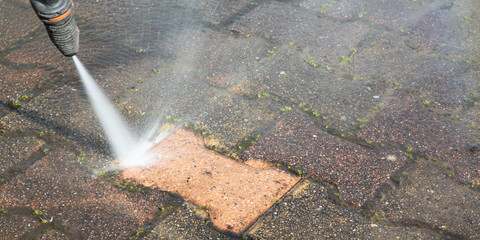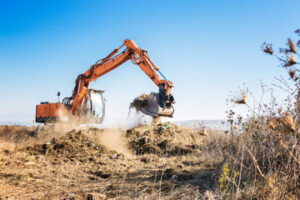Choosing the right painting contractor is one of the most important decisions you can make for your home. The wrong company can cause major problems that impact your living space and stress levels.
If you hire the wrong painting contractor for your home improvement project, you could end up with poor results and costly repairs down the line. It’s important to select a reputable contractor that can demonstrate their expertise, professionalism, and commitment to quality. Addressing common objections early on in the process helps build trust and ensure a positive outcome for both parties. Contact Modesto Painting Company for professional help.
Objections often revolve around cost, timeframe, potential disruptions, and quality standards. Understanding and responding to these concerns in a professional manner can help you overcome them, improving overall satisfaction with your home painting services. In addition to discussing the specifics of your project, painters should also be willing to provide testimonials and references from past clients that can offer additional insights into their work ethic and reliability.
A remarkably low bid may be a red flag, suggesting shortcuts in materials or lack of insurance coverage. A reputable contractor will prioritize value over cost, offering warranties or satisfaction guarantees to reinforce their dedication to high-quality workmanship. They should also be willing to discuss their quality standards in detail, including thorough surface preparation and use of high-quality paints.
Inadequate communication between the client and contractor can lead to misunderstandings and delays. A reputable painter will be available to answer any questions you might have and will make it a point to establish open lines of communication throughout the duration of your project. They will also be willing to listen to any concerns or issues you have, addressing them promptly and resolving them as quickly as possible.
Faulty workmanship refers to a contractor’s failure to follow the standards set out in the contract, the construction industry in general, or the law. This can include a variety of different things, from shoddy paint jobs that don’t meet the expected quality to late completion and unfinished work. If you suspect that a painting contractor has performed substandard work, you should contact them directly to resolve the issue. In some cases, you may be able to recover damages through a breach of contract claim. This can cover the cost of repairs, additional labor costs, and damages to your property.
Safety Concerns
Painting requires the use of various chemicals, many of which are flammable. This is why it is important to make sure that all fire safety protocols are being followed. This includes properly storing all materials, ensuring that all fire extinguishers are in working order, and that any potential hazards such as cluttered work areas or electrical cords are being dealt with appropriately.
In addition, paints and solvents have a number of health concerns associated with them. For example, inhaling paint fumes can lead to respiratory problems including asthma and bronchitis, while some paints have been known to contain toxic metals such as lead and cadmium. If these chemicals are not handled properly, they can also be hazardous to the skin, causing irritation or even burns.
Lastly, painting can result in dust and debris, which can be hazardous to people who are inside the building. To avoid this, it is a good idea to remove as much furniture as possible from the room that is being painted and to cover those pieces that can’t be removed. This can also help to prevent stains and other types of damage caused by the paint and other renovation materials used in the project.
Other common issues that can occur during a painting project include the risk of falls and injuries. It is important to use ladders safely and to wear appropriate footwear when working on stairs or other high surfaces. Also, if using power tools, it is important to follow all proper safety procedures to reduce the risk of injury.
Other safety issues to be aware of include the possibility of exposure to heat and cold during indoor or outdoor painting projects. This can cause a range of symptoms, such as headaches and fatigue. To minimize these risks, it is important to schedule painting during less busy times of the year and to take steps to separate the painting area from operational warehouse zones, if applicable. Also, to mitigate the risk of slips and falls, it is a good idea to keep all tools and supplies on stable surfaces and to clear walkways of any clutter or other obstacles that could pose a tripping hazard.
Damage to Property
Whether it is smashing a customer’s cell phone, poking a hole in the canvas of their painting or tearing up their driveway, damaging a client’s property is a serious offense and reflects poorly on a company. A reputable painting company would never do such a thing. But even if you find a great company to work with, you need to check their insurance policies and guarantees before hiring them for any projects.
Insurance is a crucial component to any painting service. Not only does it protect the painting professionals from unforeseen incidents, but it also shows clients that they are a trusted and responsible business.
If you are looking for a painting contractor, always ask to see their general liability and workers’ compensation insurance. In addition, request the specifics of their service guarantee and how they are willing to address any issues that may arise during the project.
It is not uncommon for contractors to damage property during a job. However, a reputable company will be able to resolve the issue quickly and efficiently. They will likely have a designated person for complaints, and they will be willing to meet with the customer to discuss the problem in detail and come up with a resolution.
Regardless of how well a painter works, accidents can happen. If an accident occurs on the client’s property, they need to know that their painting professional is insured. A liability policy will cover the costs of any damages, and a workers’ comp policy will help pay for medical expenses and lost wages if a worker is injured on the job.
Although these insurance policies do cost a bit of money, they are an investment in the long-term stability of a business. Clients want to be confident that the painting professionals they hire are not only reliable and trustworthy, but that they are also insured and committed to customer satisfaction. Without these policies, a painting business could be sued for hefty fines and compensation payments for property damage or injuries sustained by employees. This could severely impact a company’s reputation and financial security.


















